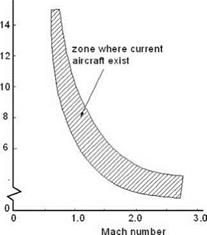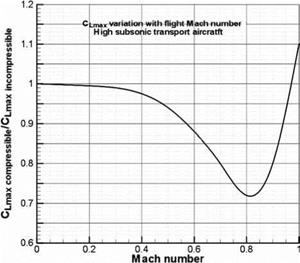Wing Stall Pattern and Wing Twist
The lower the speed at landing, the safer is the aircraft in case of any inadvertent mishap. An aircraft landing occurs near the wing stall condition when the aileron effectiveness should be retained to avoid a wing tip hitting the ground. In other words, when approaching the stall condition, its gradual development should start from the wing root, which allows the aileron at the wing tip to retain its ability to maintain level flight. Figure 3.40 (see also Figure 3.18) shows typical wing stall propagation patterns on various types of wing planforms.
![]()

 |
Figure 3.38. Thickness-to-chord ratio for various aircraft
 |
Because a swept-back wing tends to stall at the tip first, twisting of the wing tip nose downward (i. e., washout) is necessary to force the root section to stall first, thereby retaining roll control during the landing.
A good way to ensure the delay of the wing tip stall is to twist the wing about the У-axis so that the tip LE is lower than the wing root LE (see Figure 3.32). Typical twist-angle values are 1 to 2 deg and rarely exceed 3 deg.











